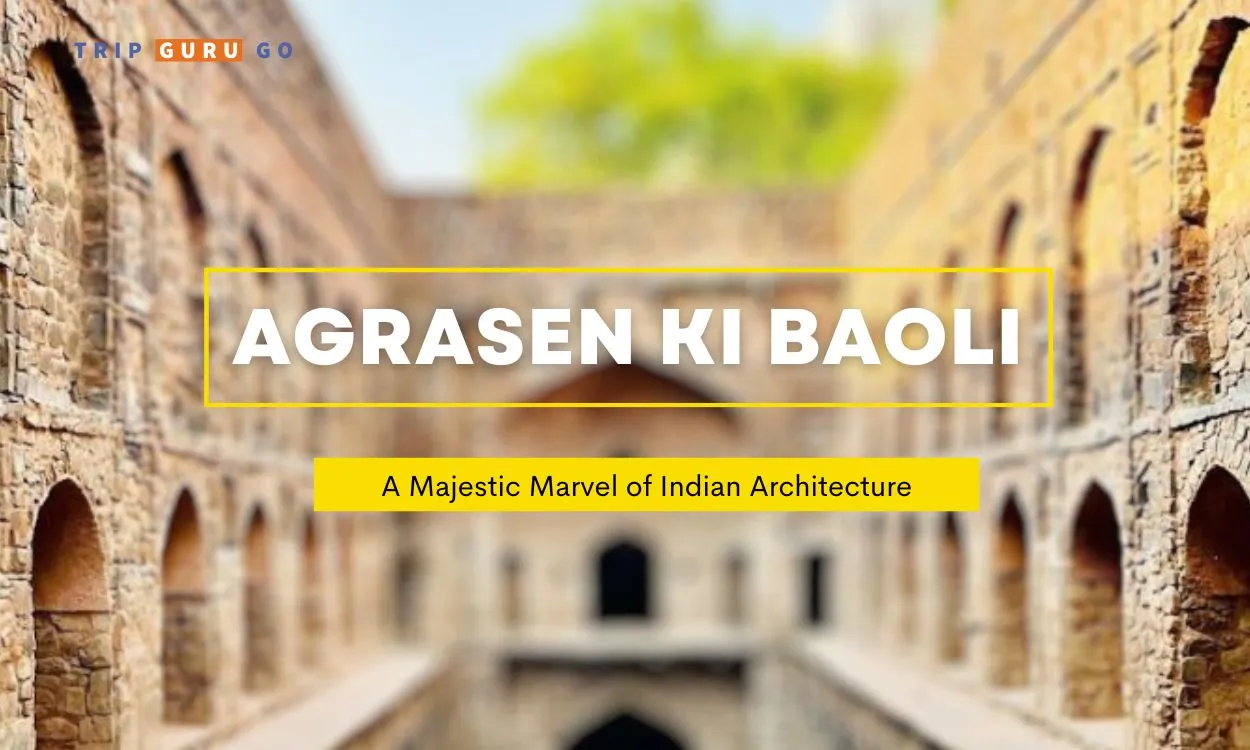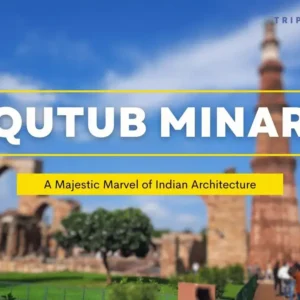Introduction
Welcome to our full guide to Agrasen Ki Baoli, a secret gem in the busy city of Delhi, India, in the year 2023. If you’re a history enthusiast or an architecture lover, Stepwell of Agrasen is a must-visit destination in Delhi. This is an old stepwell that is also called “Agrasen ki Stepwell.” A beautiful piece of architecture that has stood the test of time. Locals and tourists alike have fallen in love with it. In this article, we’ll look at the interesting history, architecture, and societal significance of Agrasen Ki Baoli. And tell us why it’s a top tourist location.
History of Agrasen ki Baoli
Agrasen ki Baoli, also known as Ugrasen ki Baoli, is the stepwell of Agrasen ki Baoli. It has a long past that goes back several hundred years. People think that King Agrasen built this castle during the time of the Mahabharata, more than a thousand years ago. Who was known for being kind to his people and thinking about them. The people in the area didn’t use the stepwell to store water. But also as a place to walk around, think, and take it easy.
Architecture of Agrasen Ki Baoli
Ancient India had some of the best building skills in the world, and Agrasen ki Baoli is proof of that. The stepwell is an amazing building made up of many steps that lead down to a water storage tank. The steps are the same on both sides, making them symmetrical. These attractions impress people with their well-crafted design.
The unique shape of the stepwell also helps in bringing the cool air deeper. Which is a nice break from the scorching heat of Delhi. The elaborate paintings and designs on the walls also add to the beauty of the place as a whole.
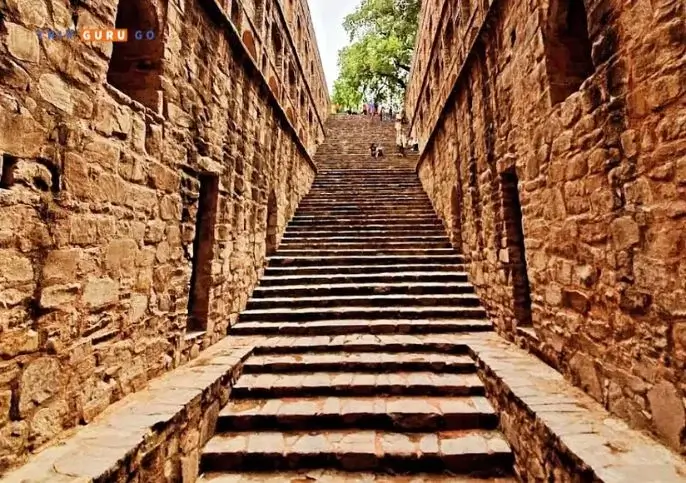
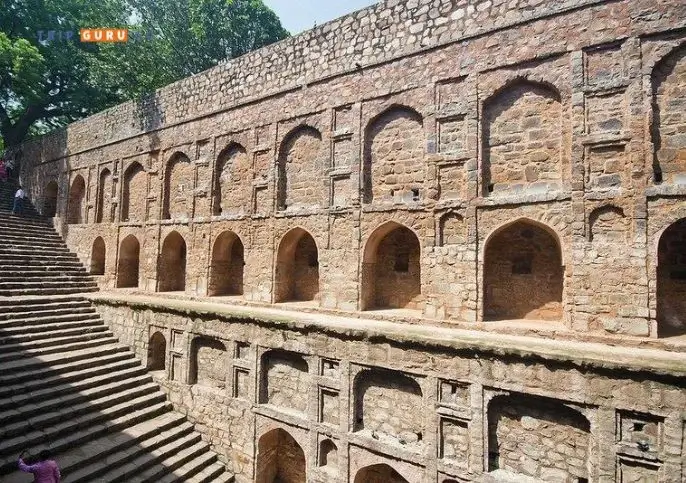
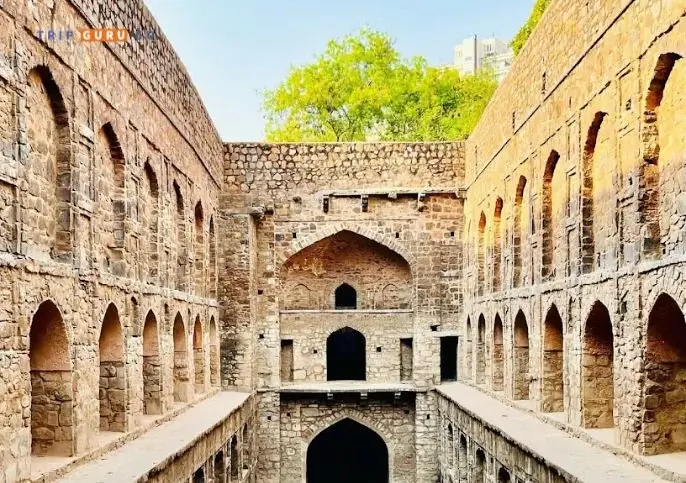
The uniform design supports unity, making it a great place for meditation and self-reflection. It also connects tourists to the history and culture of old India.
Cultural Significance of Agrasen ki Baoli
Agrasen Ki Baoli is an important culture symbol for the people of Delhi. It is also a historical site. Various literary works and movies have mentioned it, further enhancing its significance. Artists, photographers and actors are also attracted to this stepwell. Because its beautiful architecture inspires them.
Here are some aspects of its cultural significance:
- Historical Legacy: The history of Agrasen Ki Baoli goes back hundreds of years. It is a live example of how smart and skilled engineers and architects were in ancient India.
- Local Folklore: Local legends and stories make the stepwell seem magical and strange. Which makes it more important culturally. From one age to the next, people have told stories about spirits, healing waters, and magical links.
- Artistic Brilliance: The elaborate paintings and patterns on the walls show how talented artists were in the past. Ugrasen Ki Baoli is a work of art and skill that will last forever.
- Spiritual Gathering: In the past, this baoli would have been a place for spiritual meetings, meditation, and community traditions. It shows how spiritual people in old India thought and acted.
- Symbol of Resilience: As an old building that has stood the test of time, Agrasen Ki Baoli is a sign of strength and endurance. Its ability to stand the test of time inspires awe and respect.
- Educational Value: People can learn from the stepwell because it shows how people in the past saved water. How important stepwells are in India’s dry areas.
- Cultural Events: The historical site has also become a place where cultural events, poem readings, and artistic acts take place. This helps make links between modern art and historical sites.
When you visit this Baoli, you can see how it is a place where history, faith, art, and society all come together. It is a great example of India’s rich history.
The Legends and Folklore
People say that good spirits live in Agrasen’s stepwell. Like a lot of other old places in India that are full of legends and stories. Locals say that as they came down the stairs, they heard strange whispers and felt a cold they couldn’t explain. Some people also believe that water can help. Which brings there people looking for peace of mind.
Significance in Modern Times
In current times, the meaning of Agrasen Ki Baoli has changed. It is now a famous tourist spot and a peaceful place to get away from city life. People who like photography, history, and peace go there. Even though it has been around for a long time, it is still very important for many reasons:
- Tourist Attraction: Agrasen Ki Baoli has become a famous place for tourists to visit. People come from all over the world to see it. It is a must-see place in Delhi because of how beautiful it is and how important it is culturally.
- Cultural Symbol: The stepwell is no longer used for its original purpose. Instead, it has become a culture sign of India’s successes in architecture and art. It shows how different the country’s culture is.
- Architectural Inspiration: The monument’s perfect design and clever ways of saving water continue to inspire builders and designers in India and around the world.
- Photography and Media: Stepwell’s beautiful beauty and historical importance have made it a popular place for photos, movies, and other media projects. This has helped more people learn about its cultural value.
- Educational and Research Value: Agrasen Ki Baoli can be used as a case study to learn about how old people managed water and built things. It helps people learn about and study the past.
- Conservation Efforts: Because of the Stepwell’s lasting cultural importance, the government and heritage groups are working to protect and keep up this important historical place.
- Environmental Consciousness: People are worried about the environment and there is not enough water. The ways that people saved water in the past at Agrasen Ki Baoli show how they lived in a sustainable way.
- National Pride: This stepwell makes people feel proud of their country because it is such a gift. Which will always be there and is a sign of the rich cultural history of India. Which continues to attract and inspire people around the world.
In modern times, Agrasen Ki Baoli is a cherished cultural and architectural gem that fosters identity and pride. Its timeless allure ensures it remains celebrated for generations.
Conservation Efforts for Agrasen ki Baoli
The government has made it a top concern to protect the traditional history of Agrasen ki Baoli. Several repairs and conservation attempts have been made to keep the stepwell from being killed by nature or by people. Researchers, scientists, and people who care about the environment have helped keep this building’s construction and past in good shape.
Exploring the Stepwell’s Depths at Agrasen ki Baoli
Explore the depths of Agrasen ki Baoli and be amazed at its clever construction. As you go down the well-kept stairs, the air gets cooler and you feel more relaxed. The play of light and shadow gives an airy feel to the experience. And creates a magical atmosphere that mesmerizes all who visit.
Haunted stories of Agrasen ki Baoli
The tales of the stepwell being haunted stories continue to intrigue visitors. Many recount eerie experiences, such as feeling a mysterious presence or hearing faint whispers. Some attribute these phenomena to the spirits of the past, while others believe it’s merely a result of the imagination running wild. Regardless, the haunting tales add an extra layer of allure to Agrasen ki Baoli.
Agrasen ki Baoli in Popular Culture
Agrasen ki Baoli has become a part of popular culture over time. It has been in movies, books, and paintings, which makes it even more of a famous symbol. Its mysterious air and historical charm make it a popular place for artists and directors who want to get ideas. Bollywood, India’s huge movie business, has a big effect on popular culture. Bollywood movies have shown the baoli, which has made it even more famous among locals and tourists. The stepwell is important to culture in part because it has been used as a movie set.
Agrasen Ki Baoli: A Photographic Journey
For photography enthusiasts, Agrasen Ki Baoli offers a captivating journey. Capture stunning photos of carved arches and play of light on the water. Don’t forget your camera to preserve history’s essence through your lens.
Here are the highlights of this visual adventure:
- Intricate Carvings: Capture the mesmerizing details of the stepwell’s intricate carvings adorning the walls. The ancient craftsmanship will leave you in awe.
- Symmetry and Design: Frame the symmetrical arrangement of steps that lead down to the water reservoir. The architectural design creates a stunning composition.
- Light and Shadow Play: Play with light and shadow on the ancient walls, capturing the interplay to create captivating and dramatic shots.
- Reflections in Water: Experiment with reflections on the tranquil water surface, as the stepwell acts as a mirror for the architectural beauty above.
- Stepwell Staircase: Photograph the majestic staircase from different angles, showcasing the grandeur of this historical marvel.
- Architectural Patterns: Zoom in on the intricate patterns and motifs that adorn the walls, revealing the artistic brilliance of ancient India.
- The contrast of Modernity: Frame shots that juxtapose the ancient stepwell with the modern cityscape, representing the meeting of history and contemporary life.
- Sunset Silhouettes: Capture the stepwell’s silhouette against the backdrop of a stunning sunset, creating a captivating and dramatic image.
- Candid Moments: Observe visitors interacting with the stepwell, capturing candid moments that showcase the place’s cultural and social significance.
- Architectural Details: Focus on the intricate architectural details, such as arches, pillars, and alcoves, to highlight the fine craftsmanship of the era.
- Spirituality and Mystique: Try to convey the spiritual aura and mystique associated with Agrasen Ki Baoli, adding an ethereal touch to your photographs.
Bring your camera and immerse in Agrasen Ki Baoli’s captivating journey. Capture history, artistry, and spirituality, preserving its ancient charm through your lens.
Breathtaking Views at Agrasen Ki Baoli:
When people get to the bottom of the stepwell, they get a stunning view of the water tank surrounded by old walls. This gives them a unique look into Delhi’s past. The structure’s perfect balance gives everyone who sees it a feeling of unity. This is what makes Agrasen Ki Baoli so special.
Here are some of the mesmerizing sights you can expect to encounter:
- Architectural Marvels: Intricate carvings and symmetrical design.
- Play of Light and Shadow: Magical ambiance, perfect for photography.
- Descending into History: Immersive journey through time.
- Reflections on Water: Exquisite architecture mirrored in still water.
- Peaceful Surroundings: Serene Oasis away from the city.
- Cultural Heritage: Soaked in rich history and traditions.
- View from the Top: Panoramic perspective of the stepwell.
- Architectural Details: Intricate sculptures and craftsmanship.
- Meeting Point of History and Present: Bridge between the past and modernity.
- Sunset Splendor: Captivating sunset hues over the stepwell.
At Agrasen Ki Baoli, you can take in these stunning views to remember this historic spot forever.
Meditation and Serenity
Agrasen ki Baoli is a quiet haven in the middle of a busy city where people can get away from the noise of city life. Many people come to visit this stepwell as it is quiet and peaceful. Which makes it a great place to meditate and think. The calmness of the environment makes people feel at peace and helps them get in touch with themselves.
The Spirituality Connection
For some, Agrasen Ki Baoli has a greater spiritual link. It is a place where people come to find inner peace and wisdom. The mystery surrounding this site adds to its spiritual atmosphere. Making it a great place for those who want to achieve spiritual awakening.
Here are some aspects of the spiritual connection associated with this historic stepwell:
- Mythological Legends: Local tales say that a friendly spirit named Jinn lives in the dark corners of this baoli. Their appearance makes the place more interesting and draws people in.
- Spiritual Significance: Beyond its water reservoir function, Agrasen Ki Baoli holds spiritual significance. People think that bathing in the water will heal them and bring them benefits and good luck.
- Historical Rituals: In the past, the stepwell may have been a place where different events and traditions took place. It was a great place for meditation and spiritual practices because the place was quiet and peaceful.
- Cultural Beliefs: Since ancient times, people have known that Agrasen Ki Baoli has a magical link. Spirit stories and beliefs that the stepwell is holy are still a big part of the local culture and traditions.
The spiritual connection to Agrasen Ki Baoli makes it more interesting. But it is important to remember that these scenes are traditions, which adds to its cultural significance. As a guest, you can discover and enjoy the beauty of this old building wonder.
Nearby Attractions of Agrasen Ki Baoli:
Combine your visit to Agrasen Ki Baoli with a visit to nearby places like Connaught Place. Which is a busy area with eating and shopping places. Don’t miss the nearby landmarks Jantar Mantar and India Gate.
- Connaught Place: A bustling commercial and cultural hub with shopping, dining, and entertainment options.
- Jantar Mantar: An astronomical observatory featuring 13 architectural instruments.
- India Gate: A war memorial honoring Indian soldiers, beautifully illuminated at night.
- Gurudwara Bangla Sahib: A serene Sikh place of worship known for its golden dome.
- Rashtrapati Bhavan: The official residence of the President of India.
- National Museum: An extensive collection of Indian artifacts and art.
- Lodhi Garden: A peaceful park with historical tombs and architecture.
- Humayun’s Tomb: A majestic Mughal mausoleum, Humayun’s Tomb UNESCO World Heritage Site.
- Chandni Chowk
- ISKCON Temple Delhi
Explore these nearby places while you’re at Agrasen Ki Baoli to learn more about Delhi’s rich cultural history.
A Must-Visit Destination
For anyone visiting Delhi, Agrasen ki Baoli is a must-see destination in 2023. The stepwell’s historical significance, stunning architecture, and spiritual ambiance create an unparalleled experience. Whether you like history, are a photographer, or are looking for peace, this historical place is sure to leave an impression on your heart and mind that you will never forget.
Visitor Information:
Here is essential information for visitors planning to explore Agrasen Ki Baoli:
- Timings and Visiting Hours: Agrasen Ki Baoli is open from 9:00 AM to 5:30 PM daily. Plan your visit accordingly to experience its grandeur.
- Ticket Prices and Entry Fees: Agrasen Ki Baoli does not charge any entry fee for tourists or visitors. It is open for everyone to explore and enjoy without any cost.
- Best Time to Visit: For a comfortable exploration, consider visiting this place between October and March when the weather is pleasant and not extreme.
- How to Reach: It is located at Historical Baoli Hailey Road, Connaught Place, Delhi which is easily accessible from all parts of the city. Choose from metro, buses, cabs, or auto-rickshaws. The nearest metro stations to Agrasen Ki Baoli are Janpath or Barakhamba Road.
Agrasen ki baoli timings:
Agrasen ki Baoli timings are from 9:00 AM to 5:30 PM. Plan your visit to this historic stepwell accordingly.
Agrasen Ki Baoli Entry Fee & Ticket Price:
Agrasen Ki Baoli does not have an entry fee; it is open to the public for free. Visitors can explore this historical site without any ticket charges.
agrasen ki baoli address:
Agrasen ki Baoli Address: J6GG+C2F, Hailey Road, KG Marg, near Diwanchand Imaging Centre, New Delhi, Delhi 110001
How to Reach Agrasen Ki Baoli?
To reach Agrasen Ki Baoli, the historic stepwell in Delhi, you can take the metro, hire a taxi, or walk if nearby.
| Transportation | Nearest Stop | Distance from Agrasen Ki Baoli |
|---|---|---|
| By Bus | Max Muller Bhawan | 3 minutes walk |
| By Metro | Barakhamba Road | 9 minutes walk |
| By Rail | Shivaji Bridge | 16 minutes walk |
This table provides a clear overview of how to reach Agrasen Ki Baoli using different modes of transportation.
| Nearby Transportation Options to Agrasen Ki Baoli in Delhi | Walking Distance |
|---|---|
| Metro Stations: | |
| Barakhamba Road | 1 min walk |
| Rajiv Chowk | 6 min walk |
| Janpath | 12 min walk |
| Train Station: | |
| Shivaji Bridge | 5 min walk |
| Bus Stations: | |
| Max Muller Bhawan | 5 min walk |
| Modern School | 6 min walk |
| Scindia House / Kailash Bhavan | 7 min walk |
| Tolstoy Marg Barakhamba Crossing | 7 min walk |
| Bhartiya Vidya Bhawan | 7 min walk |
| Tolstoy Marg | 8 min walk |
These transportation options make visiting Agrasen Ki Baoli in Delhi easily accessible from various parts of the city.
Agrasen Ki Baoli Nearest Metro Station:
The nearest metro station to Agrasen Ki Baoli is “Barakhamba Road Metro Station” in Delhi.
Conclusion
Agrasen ki Baoli is not just a beautiful piece of architecture; it is also a symbol of India’s rich cultural history. The stepwell continues to amaze and captivate people from all walks of life with its mysterious stories, beautiful construction, and spiritual appeal. As you go deeper into it, you can’t help but be taken back in time, making connections with the past and appreciating the present.
FAQs (Frequently Asked Questions):
While the stepwell is generally safe during the day, it is advisable to avoid visiting it late at night due to limited lighting and the lack of security personnel.
No, for safety reasons, visitors are not allowed to enter the water reservoir.
No, there is no entry fee to visit. It is open to the public.
Yes, you can hire a local guide who can provide detailed insights into the history and legends surrounding Agrasen ki Baoli.
Yes, photography is allowed inside Agrasen ki Baoli. It is a popular spot for photography enthusiasts.
Agrasen Ki Baoli has 104 steps, leading you to its three-tier deep structure, enhancing your experience.
There were once approximately one hundred or more Baolis in Delhi, but today, only around thirty remain due to the passage of time. Baolis are reservoirs designed for water storage.
While the exact origins are debated, some historians believe it dates back to the time of the Mahabharata and was constructed by King Maharaja Agrasen. Today, it serves as a water reservoir and a community space.
The southwestern region of Gujarat is renowned for its step wells, dating back to around 600 AD. They later spread north to Rajasthan and west India.
Agrasen Ki Baoli is believed to have been originally built by the great king Agrasen.
Agrasen Ki Baoli is notable for its dimensions, being 60 meters long north to south and 15 meters wide on the ground floor.
The architectural features of this red sandstone stepwell are indicative of the Tughlaq and Lodi periods.
For the best experience, it’s recommended to visit Agrasen Ki Baoli during the months of September, October, and November.
No, there is no parking space available at Agrasen Ki Baoli. Visitors are advised to consider alternative transportation options when planning their visit.
The following Bus lines stop near Agrasen Ki Baoli: 433LINKSTL, 440, 450, 615, 722, 740A, 894, 966, and CBD2. These bus routes provide convenient access to the location.
There is no entry fee or ticket price for Agrasen Ki Baoli. It is open to the public for free, allowing visitors to explore this historical site without any charges.
So, plan your visit to Agrasen Ki Baoli in 2023, and let this hidden treasure leave an indelible mark on your heart!

